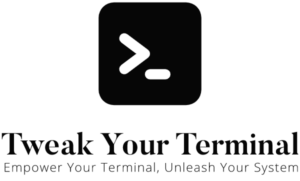There are lots of folders on your computer. Some are solely for the smooth running of your computer (System Directories). Others, like the user directories, shouldn’t be deleted for the operation of your user. If your user directory was deleted, then it wouldn’t affect any other user on the system.
Meta Directories
There are a couple of special directories that are used in macOS and Linux.
These are not real directories, but point to a real directory.
| Path | Path Description |
|---|---|
| . | Current directory |
| .. | Parent directory |
| – | Previous directory |
| ~ | User directory |
System Directories
There are lots of directories on your computer, that have a specific purpose.
Here is a list of some of the main directories.
| Absolute Path | Path Description |
|---|---|
| / | Root of all directories |
| /Applications | Global Application directory |
| /Applications/Utilities | Global Utilities directory |
| /bin | Terminal applications |
| /dev | Devices attached to computer. e.g. disks |
| /Library | Place for applications to store resources |
| /Network | List of computers on the local network |
| /opt | Optional software directory. Typically this is not used on macOS |
| /opt/homebrew | Homebrew directory on Apple Silicon Macs (M1 & M2) |
| /System | Apple system files |
| /Users | Location macOS stores users |
| /Users/<user name> | User directory (home directory) |
| /usr/local | Homebrew directory on Intel Macs |
| /Volumes | Mounted drives and other volumes are put in this directory |
| /Volumes/<name> | Mounted volume |
Your boot or system drive is special because it exists in /Volumes/Macintosh HD and is the root directory. It works, because the root directory is your boot volume.
What is in /Volumes/Macintosh HD is actually a symlink that points to /.
User Directory
You also have a set of default folders within your user or home directory.
| Relative Path | Path Description |
|---|---|
| ~ | Shortcut for the user folder. e.g. /Users/<name> |
| ~/Applications | User Application directory |
| ~/Desktop | Where items on the Desktop are stored |
| ~/Documents | Default location to store user documents and files |
| ~/Downloads | Default location for files downloaded from the internet |
| ~/Library | Application specific files and caches |
| ~/Movies | User video files |
| ~/Music | User music files |
| ~/Pictures | User picture files |
| ~/Public | Files the user wants to share |
| ~/Sites | Web pages. Used by web sharing |
New Disk Layout
With Catalina, Apple changed the layout of the filesystem. Unless you’ve been looking in Disk Utility application, you might not have even noticed. Apple split the filesystem into two volumes.
Assuming your drive is called Macintosh HD, you will now have an additional drive called Macintosh HD - Data. The Macintosh HD drive, now contains Operating System and has been made read-only. The reason for this, is to stop Operating System being changed by accident or maliciously. Your Macintosh HD - Data or your data drive, is now where all your files are stored.
Is this going to waste space?
No, because both drives share the same free disk space.
The reason you don’t know or can’t see the two drives, is because Apple has stitched them together with firmlinks.
This new layout will only be seen in the Terminal, if connect an external drive with an installation of macOS.
